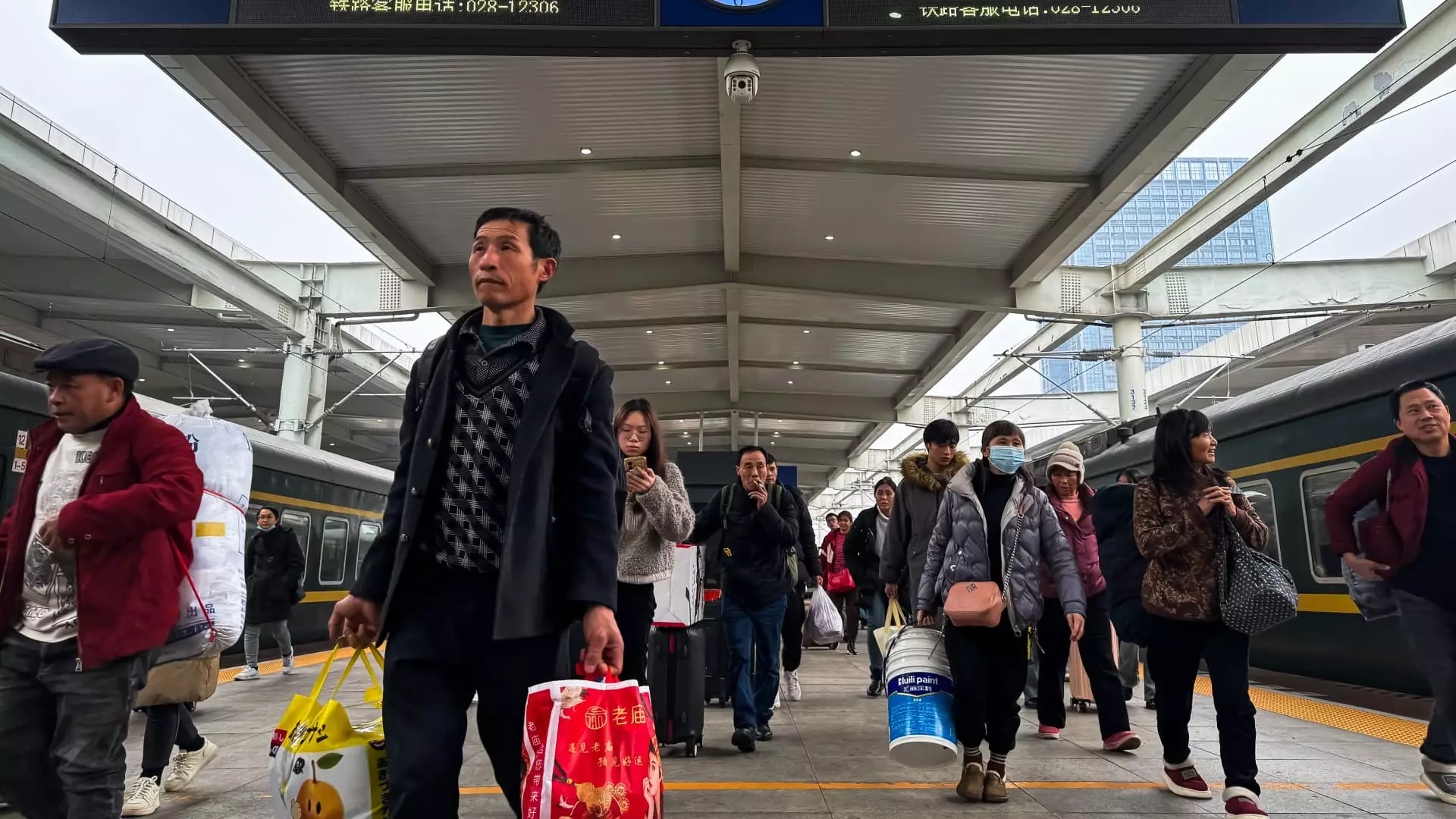Despite the Chinese government’s assurances of injecting support into the economy, the anticipated turnaround has yet to materialize. Investors have been holding their breath for definitive signs of recovery amid a backdrop of declining domestic demand and rising deflationary pressures. Since late September 2023, policymakers have announced a series of measures, including interest rate cuts and broad stimulus initiatives; however, substantial details related to fiscal support remain elusive, with concrete strategies expected only during the annual parliamentary meeting slated for March 2024. This uncertainty is putting a strain on investor confidence.
The BlackRock Investment Institute, for instance, underscored a cautious outlook in a recent report, suggesting that, although there is a modest overweight in Chinese stocks, the broader implications of the nation’s structural economic challenges could overshadow short-term investments. As the world’s second-largest economy gears up for the official GDP figures set to release soon, the question looms—are policymakers doing enough to counteract persistent economic malaise?
Consumer Behavior and Economic Woes
Recent reports highlight a stark reality: consumer prices in China saw a meager increase of just 0.5% when excluding volatile food and energy sectors—the slowest rise in a decade, underscoring weak consumer confidence. Beijing’s mayor, Yin Yong, resonated similar concerns in his latest annual report, pointing out the noticeable decline in consumer spending and foreign investments. Despite a targeted inflation rate of 2% for 2025, the current stagnation raises doubts about the government’s ability to stimulate consumption adequately.
Commercial property markets are also reflecting this downturn, with Grade A office rents in Beijing dropping dramatically by 16% in 2024 and forecasted to decline further. The new shopping centers, which opened with relatively low occupancy rates of 72%, represent an alarming trend suggesting uncertainty among consumers and businesses alike. Interestingly, these occupancy rates have climbed to 90% within a year, revealing a potential resilience in market recovery, albeit from a low starting point.
China’s approach to stimulate consumer spending diverges from models seen in Western economies, particularly the cash payouts seen during the Covid-19 pandemic. Instead, the government initiated a trade-in subsidies program worth 150 billion yuan in July to encourage consumers to upgrade household items and electronics. While this plan may boost transaction volumes in the short term, its efficacy in triggering sustainable demand remains questionable.
Experts like Rex Chen from ATRenew speculate that the trade-in subsidies may yield a 10% increase in transaction volumes on their platform. However, this short burst of activity could wane, as Nomura’s Chief China Economist Ting Lu cautions that the anticipated sales boost would likely diminish in the latter half of the year, especially as new home sales continue to lag behind expectations. As the real estate sector has long been a cornerstone of China’s economy, this sluggishness in the property market raises red flags.
The precarious state of the real estate market cannot be overlooked. Following years of unchecked growth, the sector was met with stringent regulations aimed at curbing developer debt levels, ushered in by the government in 2020. Interestingly, a shift in policy came in September, as authorities embraced more lenient measures to stabilize this crucial segment of the economy. Yet, Fitch Ratings’ Jeremy Zook warns that the real estate market has not yet hit bottom, leaving many optimistic forecasts hanging by a thread.
The impact of high inventory levels in smaller cities continues to exemplify the struggles within the housing market, as communities like Foshan face excessive housing stock that could take months to rectify. As the government attempts to steer the economy away from real estate dependency, the underlying challenges remain deeply embedded.
The economic landscape is further complicated by mounting tensions with the U.S., affecting not only trade but also foreign investment strategies. The EU Chamber of Commerce articulated concerns over European firms adapting to heightened localization pressures instigated by China’s focus on national security, leading to elevated operational costs and reduced productivity. In this context, Beijing’s emphasis on balancing security and development illustrates the complexities of leveraging both economic growth and stability.
During a recent press event, Yang Ping from the National Development and Reform Commission accentuated the government’s prioritization of consumption over investment efficiency. Such assertions, paired with the promise of additional details following the March parliamentary meeting, leave stakeholders anxious yet hopeful for clarity on how China will navigate these multifaceted economic challenges.
While the prospects of recovery in China’s economy hinge on a delicate interplay of government interventions, consumer behavior, and broader market dynamics, optimism must be tempered with caution. The coming months could provide further insight into China’s ability to revitalize its economic landscape amidst a series of pressing challenges.

